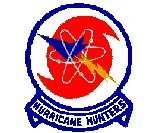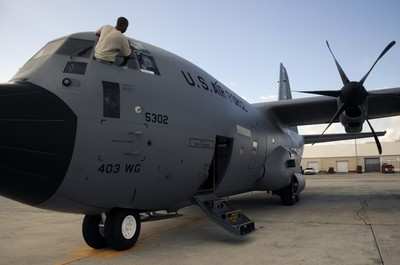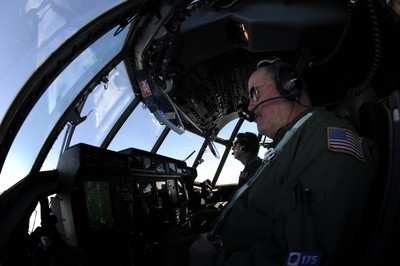Sat, Jul 04, 2009
Team Helps Predict Intensity, Tracks Of Storms
 Those of us who live in coastal
areas where hurricanes are just a fact of life really appreciate
these guys. Members of the Air Force Reserve Command's 53rd
Weather Reconnaissance Squadron deployed to their detachment here
recently to fly training missions over the Caribbean in preparation
for the 2009 hurricane season.
Those of us who live in coastal
areas where hurricanes are just a fact of life really appreciate
these guys. Members of the Air Force Reserve Command's 53rd
Weather Reconnaissance Squadron deployed to their detachment here
recently to fly training missions over the Caribbean in preparation
for the 2009 hurricane season.
Unit Airmen are part of the 403rd Wing located at Keesler Air
Force Base, MS, and are the only Department of Defense unit flying
into tropical storms and hurricanes collecting critical data.
During the next months, until Nov. 30, the Hurricane Hunters
will be honing their skills in special WC-130J Hercules aircraft,
ready to fly when called upon by people in the liaison office at
the National Oceanic and Atmospheric Administration's National
Hurricane Center in Miami. The Airmen are the only ones in the Air
Force authorized to fly in thunderstorms,

"We can be deployed within 16 hours after the call (from the
NOAA liaison office)," said Lt. Col. Louis Patriquin, the 403rd
Operations Group commander.
Their mission is to collect storm data and send to the hurricane
center for forecasters to plug into computer models for better
forecasting predictions. According to AFRC officials, one hurricane
mission can pay for itself and more by the money it saves in
unnecessary coastal evacuations. For example, officials estimate
that it costs about $1 million to evacuate the residents of a
single coastal mile.
If the 53rd WRS Airmen can reduce the evacuation area by 100 miles,
the squadron's entire flying budget is covered by one hurricane.
Money and lives also are saved by not evacuating people who aren't
in the storm's path. Evacuating people can cause deaths, not
just from the storm, according to Bill Reid, National Weather
Service director. Pinpointing accurate landfall is paramount for
all.

Depending upon the location of the storm, the base of operations
can be at Keesler AFB, Homestead Air Reserve Base, FL, or St.
Croix. Each of the Hurricane Hunter weather missions averages about
11 hours and can cover nearly 3,500 miles.
More News
Aero Linx: Model Aeronautical Association of Australia MAAA clubs are about fun flying, camaraderie and community. For over 75 years, the MAAA has been Australia’s largest fl>[...]
Touchdown Zone Lighting Two rows of transverse light bars located symmetrically about the runway centerline normally at 100 foot intervals. The basic system extends 3,000 feet alon>[...]
“Discovery and innovation are central to our mission at Virgin Galactic. We’re excited to build on our successful record of facilitating scientific experiments in subor>[...]
How To Get A Story On Aero-TV News/Feature Programming How do I submit a story idea or lead to Aero-TV? If you would like to submit a story idea or lead, please contact Jim Campbel>[...]
Student Pilot Reported That During Rotation, “All Of A Sudden The Back Of The Plane Kicked To The Right..." Analysis: The student pilot reported that during rotation, “>[...]
 ANN's Daily Aero-Linx (05.02.24)
ANN's Daily Aero-Linx (05.02.24) ANN's Daily Aero-Term (05.02.24): Touchdown Zone Lighting
ANN's Daily Aero-Term (05.02.24): Touchdown Zone Lighting Aero-News: Quote of the Day (05.02.24)
Aero-News: Quote of the Day (05.02.24) ANN FAQ: Contributing To Aero-TV
ANN FAQ: Contributing To Aero-TV NTSB Final Report: Cirrus Design Corp SR20
NTSB Final Report: Cirrus Design Corp SR20





